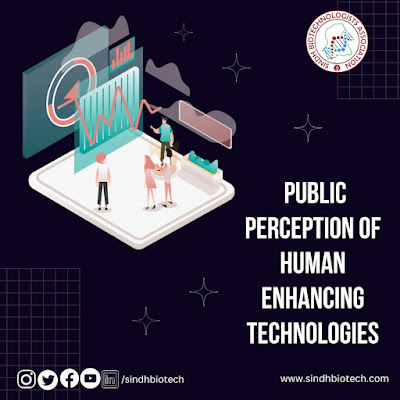Biotechnology in daily life
INTRODUCTION: More than 230 biotechnology medications and vaccines have aided hundreds of millions of people globally since 1982. More than 400 biotech medical items and vaccines are now being tested in clinical trials for more than 200 disorders, including cancer, Alzheimer's disease, heart disease, diabetes, multiple sclerosis, AIDS, and arthritis.
Hundreds of medical diagnostic tests based on biotechnology are responsible for keeping the blood supply secure from the AIDS virus and detecting other illnesses early enough to be effectively treated. Biotechnology diagnostic devices such as home pregnancy tests are also available.
HISTORY: It has existed for ages and began with the first activity of a human on life for his benefit. It began when people transformed microbes to meet the demands of mankind. Previously, biotechnologists utilized yeast cells to ferment alcoholic beverages and bacteria to produce cheese and yoghurt.
Karl Erekey, a Hungarian engineer, originated the term. In the 1970s, California pioneered modern biotechnology. Prior to 1971, the word "biotechnology" was mostly employed in the food processing and agriculture industries.
TYPES OF BIOTECHNOLOGY:
1. Green biotechnology (agricultural applications)
2. Red biotechnology (medical applications)
3. Blue biotechnology (aquatic applications)
4. White biotechnology (industrial applications)
GREEN BIOTECHNOLOGY: it is also known as agriculture biotechnology. It involves usage of biotechnological techniques in agriculture such as plant tissue culture, plant genetic engineering, bio fertilizers and bio pesticides, hybridization etc. [1] (SHEN 2019)
. EXAMPLES:
· GOLDEN RICE: vitamin A deficiency is a significant condition that can lead to blindness at an early age if it is left untreated. Golden rice has been genetically engineered to generate beta-carotene (a precursor of vitamin A that the body converts to vitamin A). It is the process of engineering an organism to create valuable compounds, such as enzymes.
WHITE BIOTECHNOLOGY: Also called as industrial biotechnology. It involves the use of biological approaches for the optimization of industrial operations, research for novel enzymes and enzymes that perform under high settings without mutations. [2] (DREPPER 2006)
EXAMPLES:
· Role in beverage industry
· Role in food processing and improving food quality
· Development of vaccines and medicine in large scale
RED BIOTECHNOLOGY: In medical procedures, this phrase is employed. It entails the manipulation of microbes in order to produce products such as antibiotics. It includes the manufacture of medicines and pharmaceutical products for the treatment or diagnosis of diseases. [3] (MARTIN 2002)
EXAMPLES:
· Genetically manipulation organisms to produce drugs and vaccines
· Researching genetic abnormalities through genomic manipulation
· Using DNA profiling in forensics
· Human insulin production from non-human sources.
· Hormone production, including interferons, cytokines, steroids, and human growth hormones.
· Gene therapy for the prevention and treatment of disorders such as hemophilia and cystic fibrosis
· Vaccine and antibody development for rabies, HIV, and other diseases
BLUE BIOTECHNOLOGY: it involves molecular biological approaches used on marine and freshwater organisms.it helps secure human and environmental health and provides food supply meeting the growing demand.[4] (BARCELOS 2018)
EXAMPLES:
· It provides crucial marine sources and research sites
· Algae, invertebrates, and fish are studied extensively as a food source
· Methods for developing new solutions to boost aquaculture production
· Systems for zero-waste recirculation
· Algae with High Energy Production of biofuels
· Algae, sponge, and microbes used for health
· To discover new bioactive compounds
· Bio sensing methods for monitoring the marine environment
· Antifouling technique that is non-toxic
· Industrial production of compounds such as using Algae marine biopolymer production for food, cosmetics, and health
CONCLUSIONS: Biotechnology will further improve our health and provide more illness remedies. Scientists are designing plants that will serve as "green medicine factories," producing a variety of medicines and proteins for life-saving medications and enzymes. This type of cutting-edge biotech research is being conducted all around the world, with researchers looking for bacteria with valuable qualities for manufacturing. Everywhere you turn, there are biotechnological advantages. These advantages are only a tiny sample of the vast advances brought forth by biotechnology in the 50+ years since James Watson and Francis Crick first identified the DNA molecule.
By: Mariam Imran Mansoori
REFERENCES:
1. Maocai Shen, Guangming Zeng, Yaxin Zhang, Xiaofeng Wen, Biao Song, Wangwang Tang,Can biotechnology strategies effectively manage environmental (micro)plastics?, Science of The Total Environment, Volume 697,2019,134200,https://doi.org/10.1016/j.scitotenv.2019.134200.
2. Drepper, T., Eggert, T., Hummel, W., Leggewie, C., Pohl, M., Rosenau, F., Wilhelm, S. and Jaeger, K.-E. (2006), Novel biocatalysts for white biotechnology. Biotechnology Journal, 1: 777-786. https://doi.org/10.1002/biot.200600059
3. Martin W. Bauer 2002 Public Understand. Sci. 11 93 https://doi.org/10.1088/0963-6625/11/2/301
4. Mayara C S Barcelos, Fernanda B Lupki, Gabriela A Campolina, David Lee Nelson, Gustavo Molina, The colors of biotechnology: general overview and developments of white, green and blue areas, FEMS Microbiology Letters, November 2018, fny239, https://doi.org/10.1093/femsle/fny239




Comments
Post a Comment